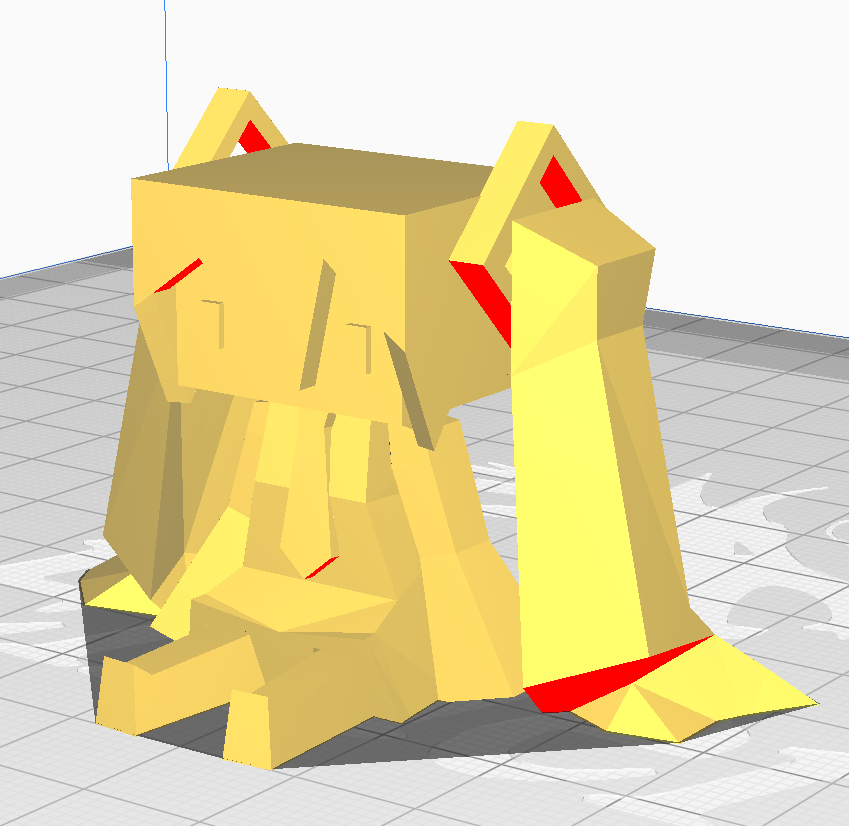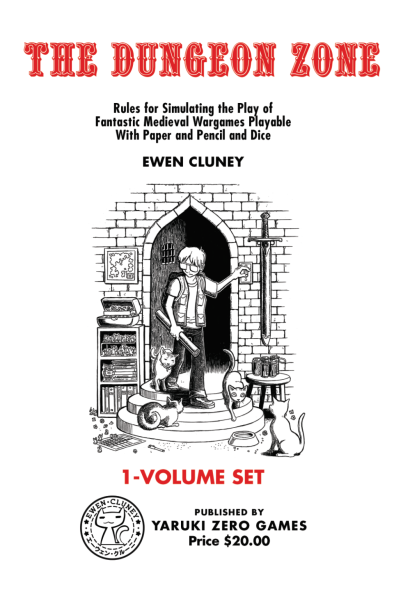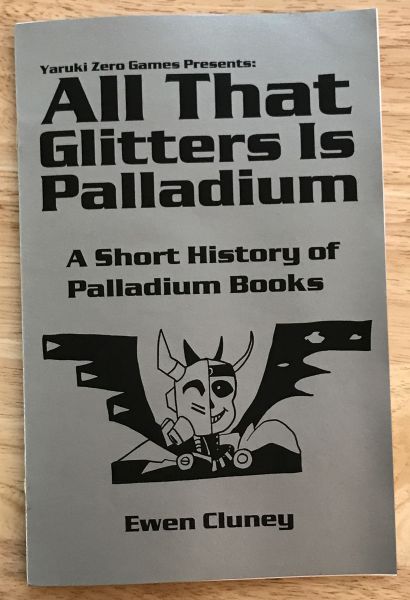I ended up following some members of the Jewish community on Twitter. Part of it is that they’re good people (there are of course Jewish jerks out there, including Jews who are jerks to other Jews for flimsy reasons), and part of it is that they regularly get into arguments with the more unpleasant kinds of Christians, people who are ill-equipped to handle the fact that Jews didn’t all convert to Christianity and stop being so darn Jewish. (I probably should cut down on Twitter honestly.) One thing that’s come out of it is the realization that my understanding of religion has been very Christian, in a way that’s oddly limiting. I’m not religious myself, but I’ve always found religion interesting. It’s impossible to fully comprehend human affairs without understanding religion, and that in turn helps make it an interesting and relevant subject in fiction.
Judaism takes scripture very, very seriously, but it’s more like a divine puzzle box to wrestle with than a source of absolute, unambiguous truth. There’s also the Talmud, a massive collection of commentaries from different authors who often contradict each other, and the oral Torah, which one Jew I follow on Twitter likes to call the Tanakh’s “user manual” that Christians threw out. God is, well, God, but also a being that Jews can argue with and sometimes even win against. (“I fill fight God in a Denny’s parking lot!”) They try to follow the 613 mitzvot insofar as they can when several are impossible without the Temple, but no one goes to hell for not following them perfectly, especially since Jews don’t have a concept of hell or even all that much emphasis on the afterlife. There are different streams of Judaism that vary a bit (though they’re neither as numerous nor as radically different as Christian sects can be), but in many of them it’s okay to be an atheist because the point is to show up, be a part of the community, and do the work. Even though Christianity uses a translation (or a mistranslation) of the Tanakh as the first half of the Bible, Judaism is more different from it than you’d expect, to the point where many Jews fiercely object to the term “Judeo-Christian” and don’t especially like being called an “Abrahamic” faith along with Christianity and Islam. (There are also a handful of other Abrahamic religions, such as Samaritanism and Mandaeism.)

(Also, following Jewish Twitter has shown me that antisemitism is depressingly alive and well, and still just as based on bigotry and lies as when Sartre penned that one quote about antisemites and their disingenuousness. But that’s a whole other topic that others can write about far better than me.)
I grew up attending a Unitarian Universalist church, which was what fit my ex-hippie parents who weren’t Christian and dabbled a little in Buddhism. Unitarians were originally a Christian sect that rejected the trinity and believed in freedom of religion. Universalists were another Christian sect, one that believed in universal salvation, the idea that God doesn’t condemn anyone to eternal damnation. Some of America’s founding fathers were Unitarians, and as niche as it is nowadays, the list of historical Unitarians is pretty impressive. The UU church today is essentially a community of people who want to be unspecifically spiritual and have something like a religious community that believes in social justice. They’re generally good people doing good things, and while I stopped attending pretty much as soon as my parents stopped making me, I do think I’m a better person for having attended all those years. I certainly still believe in UU principles like “We affirm and promote the inherent worth and dignity of every person.”
What I didn’t realize was that even though UUs are very eclectic and count Buddhists and pagans and so on among their number, they’re culturally Christian. Being “culturally” Christian means that your understanding of the world and many of the customs you practice have roots in Christianity, even if you don’t read the Bible or attend a Christian church. It isn’t a bad thing, but it is something we could stand to be more aware of. Modern Unitarians tend to have a certain aversion to Christianity proper. They were supportive of the LGBT community earlier than most, and would happily hold marriage ceremonies for gay couples even back when those marriages had to be symbolic, which put the UU church at odds with all but the most liberal Christian denominations. Despite that, the church I went to as a kid still had Sunday services with hymns and sermons and celebrated Christmas and Easter, two holidays that are part of our broader society because they’re about Jesus. In hindsight that’s all extremely Christian, especially compared to what goes on in a Jewish synagogue or a Buddhist temple.
It’s important to put stuff in perspective, and I’m reminded of how people who don’t know any TTRPGs other than D&D saw 4th Edition as a totally different game, while from a wider perspective it’s not only specifically a version of D&D, but a successor to 3.5 that wouldn’t have emerged at any other time. The system of powers and the class roles might be new, but you’re dealing with twenty-sided dice, opportunity attacks, the six 3-18 stats, and so on when you could be e.g. building dice pools for a Cortex Plus game. Modern Unitarians aren’t Christian—and I’m sure there are Christians who would declare every UU to be hellbound—but seen from a wider perspective Unitarian Universalism is nonetheless derived from Western Christian culture. When you’re part of that culture it can be hard to fully understand how pervasive it really is, even if you’re not nearly as deep into it as some full-on Christians. My family celebrates Christmas and even has a little ceramic nativity scene that my grandpa made, and that’s convenient for us because Christmas is a federal holiday and society generally bends itself around the Christmas season. Jewish folks in contrast sometimes have trouble getting time off work for their important holidays, something your average Unitarian doesn’t have to worry about.
Western atheists also tend to not realize that they’re culturally Christian, and don’t react well to the suggestion that they are. This is especially true of full-on anti-theists, people who go beyond disbelief into vehement opposition to all religion. Their criticisms of “religion” are often actually criticisms of Christianity or Christian fundamentalism, which can create problems when they run into the fact that Christianity is somewhat of an outlier among religions despite being the most popular, kind of like how D&D is something of an outlier among TTRPGs despite being the most popular. Not all religions require believing in anything supernatural per se, few have a scripture that’s treated as sacrosanct in the manner of the Bible or Koran, and even fewer take ancient scriptures literally in the manner of Christian fundamentalists. While most religions have some concept of an afterlife, not many emphasize it in the same way that Christianity does, and the idea of a deity that knows and deeply cares what goes on in your head is unusual. Christianity and Islam both involve proselytization, but the majority of religions are tied to a particular nation or ethnicity, and don’t seek out new members. In and of themselves these aren’t criticisms of Christianity, but they are things that people from the Western world often aren’t aware of as being so different in other religions.
Naturally, this is all leading to talking about D&D.
For a while now I’ve been trying to unpack what the heck is going on with the portrayal of religion in D&D. Most D&D characters will have one patron deity that they follow, who matches their particular alignment. The main religious class in the cleric, which has healing and light-based powers, and can use a holy symbol to turn undead. It came about because a player wanted to make a new character specifically to fight another player’s overpowered vampire character. It’s essentially a templar archetype, except instead of being Christian, they worship a single deity from the game world’s pantheon. While many editions give them some spell and weapon options more appropriate to other kinds of gods, they’re still usually guys in chainmail and tabards with maces and holy magic suitable for a fantastical version of Christianity. The paladin is a holy super-knight who similarly comes from a Christian tradition despite worshiping a single god from a quasi-Hellenic pantheon. The druid comes from vague ideas about what the ancient druids of the British Isles were like, which makes them non-Christian but in such a way that they exist as a contrast from the other core religion-based classes.

Worshiping a single deity while allowing for the existence of others is called henotheism. The term dates back to 1860, so it’s not as though anyone thought of themselves as henotheists in antiquity. Scholars have used the term to describe Zoroastrianism, proto-Judaism, and some forms of Hinduism and Greek polytheism. Even then, real-life henotheism takes one deity as supreme for the entire faith and treats the rest as subordinate beings or aspects of that supreme being, rather than individuals picking out one from the pantheon to be their BFF.
I don’t know how things have changed in the ensuing years, but when I was in school, we learned about the Greek myths and covered various world religions as they came up in the context of history. Even so, I never felt like I had any grasp on the actual practices or psychology of other religions, which was why I was particularly grateful to come across Bret Devereaux’s Practical Polytheism essays, which lay out the fundamentals in accessible terms.
Real-life polytheism is a pragmatic kind of religiosity, in a way that feels strange to modern, culturally Christian eyes. It comes about from people trying out different things and codifying the results into a system of rituals intended to achieve specific results by petitioning the gods. From a standpoint of modern skepticism we can say that Zeus most likely never existed and any efficacy of rituals intended to cajole him into making it rain or divine whether he approved of going to war was confirmation bias, but at the time it was the best people had figured out to cope with the chaos and cruelty of the world. Where Christianity is very concerned with orthodoxy (right belief), polytheistic religions are generally more concerned with orthopraxy (right actions). Where Christians want you to accept Jesus Christ as your lord and savior in your heart, ancient Greeks wanted you to not screw up their offering so they could have a good harvest. Rather than being henotheists, they would petition whichever god had dominion over the thing they needed help with, whether it was a heavy hitter like Zeus or the local god of the specific town. (Side Note: I don’t think any religion is exclusively concerned with orthodoxy or orthopraxy. There certainly are Christians who believe that they can petition God to affect the world, and a sufficiently vociferous denial of the existence of pagan gods would probably get you in trouble in societies that practice polytheism.)

A shrine to household gods from ancient Rome.
Christianity never gained a serious foothold in Japan the way it did in many other Asian countries. It’s hard to say how much of that was simply due to repression by the Tokugawa Shogunate, but the overall Japanese attitude towards religion likely plays a major role. While there are those who dedicate their lives to being Shinto priests, people don’t generally think of themselves as “Shintoists.” The average Japanese person goes to a Shinto shrine on New Year’s, attends funerals at Buddhist temples, and may have a wedding at a fake Christian church just because they like the atmosphere. While there may be some white guy somewhere who was so dedicated that he was accepted as a kannushi at a Shinto shrine, for the most part Shinto is more a part of Japanese culture, and it isn’t a religion that a person converts to in the sense that one might convert to Christianity or Islam. Where it can be deeply problematic for Christians to hold a Passover Seder, tourists at major Shinto shrines are invited to participate in simple rituals and buy omamori from the gift shop. The kami are evidently more concerned with the rituals getting done than the ethnicities or religions of the people doing them. It’s hard to generalize about polytheism—although monotheists are most of the world’s population, polytheism accounts for a massive number of religions—but the Japanese attitude is another example of polytheist orthopraxy.
One thing people have remarked on is that most D&D campaign settings are worlds where the gods are verifiably real and intervene in human affairs, so that there’s no need for “faith.” That isn’t wrong, but it does reveal a culturally Christian view of religion. While polytheists in the real world can’t point to undeniable instances of gods walking the earth in the same manner as the inhabitants of Faerûn, the pragmatic polytheistic model does posit a worldview where the gods are very real and distinctly interventionist, to the point where entreating them to affect the world is a routine part of not just religious practice but daily life. In that respect D&D’s depiction of gods is relatively authentic. Clerics and other divine characters have the ability to cast spells that their gods grant them, creating a very direct line of cause and effect between worship and affecting the world. Obviously Cure Light Wounds is much more direct than a sacrifice to Poseidon for calm seas, but it’s still power received from a god.
Where D&D parts ways with real polytheism—and I think misses out—is the question of the rituals that aren’t immediately useful for adventurers. We don’t really know what worshippers of the Faerûnian pantheon do when they want to ensure a bountiful harvest or fair weather. In real-life polytheism, the gods are in a certain sense an important part of the community. They make their will known via the results of divination and natural phenomena rather than through plain words or divine manifestations, but people take those things very seriously and work very hard at finding proper interpretations of the signs. In that respect I feel like I’ve been misled as to what divination is actually for. As the root word at the front implies, it’s not so much a way to see the future as a way to receive information from the gods. From a modern skeptic’s perspective you’re not going to find out much about how Jupiter is feeling from examining a bull’s entrails, but as with other rituals of the time, it was the best they had. Where divination failed, they could chalk it up to the temperament of the god in question or perhaps a failure on the diviner’s part.
Another component of polytheism that’s mostly absent from D&D is the deification of mortals. Egyptian Pharaohs were living gods, Japanese emperors are descendants of Amaterasu, and many Roman emperors were deified. It’s a practice that seems silly from a modern perspective—surely people understood that all else being equal you could kill a Pharaoh with a knife as easily as any other man—but that reveals other aspects of polytheism that no one bothered to teach us. Polytheists generally have both big and small gods, from the ones that showed up in Deities & Demigods all the way down to the minor gods of a single household. Also, the kinds of mortals that people deified were typically so powerful and influential that relative to your average commoner they practically were gods of a sort. At the high end of humanity and the low end of the divine, the two start to blur together a bit. No one thought that Caesar suddenly started throwing around lightning bolts, but they did still think he was a worthy object of ritual worship. When Gygax was at the helm, D&D didn’t have a lot to say about encounters with gods apart from them being unsafe for all but the most powerful PCs. DMs and occasional modules would work in meetings with gods now and then, but they lack the element of participation that defines the gods of real-life polytheism. Your average cleric character worships and gains spells from a particular god, but only has insights into what their god thinks about things when the DM informally chooses to have that happen in the campaign.
Regardless, the “personalized henotheism” of D&D is certainly an oddity. If religion in D&D followed the pattern of real-life polytheism, you wouldn’t have a cleric of Tyr or Lathander, but a priest class who might perform rituals invoking any of the gods in the setting’s pantheon. Bane wouldn’t be a reviled figure worshiped only by evil cultists, but a dangerous god that people would try to appease and anticipate, not unlike Ares in ancient Greece. This doesn’t mean D&D has to change, but rather that it’s good for us to be aware of its underpinnings and the possibilities that sit apart from what Gygax intended. D&D is weird. It’s weirdness is one of the best things about it, but the tendency to leave that weirdness unexamined and unexplained is one of the worst things about how we collectively engage with it.
We know that Gygax was a Jehovah’s Witness for at least part of his life, thanks to a letter he wrote to a wargaming zine about how Christmas is a pagan celebration that Christians shouldn’t engage in. One of my best and oldest friends is a Witness, and I wonder if he could’ve convinced his dad to let him play D&D if he could’ve told him about the author’s faith. The fact that my friend was allowed to play other TTRPGs that had their own fictional occult elements was a testament to how little people know about the medium apart from D&D.
People mostly know Jehovah’s Witnesses as one of the flavors of annoying people who knock on doors along with Mormons and door-to-door salesmen, but they’re one of the more unusual forms of Christianity, to the point where some Christians claim that JWs aren’t real Christians. (Though given how readily some do that, you should take such accusations with a grain of salt.) Witnesses have their own interpretations of the Bible, which among other things is why they don’t allow Christmas, birthdays, or blood transfusions. They’re also particularly opposed to engaging with other religions, and never participate in interfaith activities. I can’t draw a direct line from their Watchtower magazine to D&D—especially given how freely Gygax drew on mythology and fantasy literature—but as we’ve seen, D&D’s treatment of religion definitely has some culturally Christian elements. Of course, that’s true of practically everything in Western culture, so I wouldn’t read too much into it in terms of Gygax’s personal proclivities.
D&D characters by default have relationships with single gods out of a pagan pantheon that are personal in a manner reminiscent of how some Christians talk about Jesus, yet it situates them in worlds where the gods are not ineffable and immaterial, but exaggerated reflections of humanity in the manner of Greek myths. While it’s certainly different from actual Christianity, it’s also decidedly Western and Hellenistic, such that it doesn’t account for possibilities like gods as immaterial beings not transcendently different from us (as in Shinto) or gods as aspects of a higher unity (as in some forms of Hinduism).
Where things get especially strange and a bit worrisome is in Gygax’s treatment of alignments. In OD&D, alignments were limited to Lawful/Neutral/Chaotic, and represented allegiance to cosmic forces rather than personal morality. AD&D added the Good/Neutral/Evil axis, but when you get into the things Gygax has written about what they mean, they start to sound deeply strange, and not in a charming way. In his view a paladin would be perfectly fine getting a villain to convert at sword-point and then killing them immediately so they went to a better place rather than having a chance of recidivism. If you come at morality from a more modern, humanist standpoint, the paladin is clearly just coming up with an excuse to murder people. To Gygax good apparently isn’t something you do, but an allegiance you have. I’m reminded a bit of how the Spanish regarded natives when they came to the Americas, in that they only really saw someone as a fellow human being if they were a Christian. Christopher Columbus would stop friars from baptizing the natives specifically because that meant he couldn’t enslave them. Gygax’s version of “Good” in D&D isn’t all that different from how conquistadores might’ve used the word “Christian.” For my part that isn’t the kind of world I want to play in, but fortunately D&D has moved away from that in successive editions. It’s a view that parts ways with both real-life polytheism and mainstream Christianity in a rather ugly way, and not unlike in Harry Potter it posits a world where there are bad sides but not bad actions per se.
The biggest reason I keep ending up writing about D&D is the sheer scope of its reach, which I’ve found is much larger than people realize. Nerds who played D&D went on to work extensively in video games, which helped propel several elements of the game into mass consciousness around the world. They subtly communicated Gygax’s violent, mercenary libertarianism, but I think they may have also carried some of his culturally Christian (and in some cases explicitly Christian) ideas about religion as well. Despite having had to travel by way of the Wizardry! and Dragon Quest games, the strange quasi-Christian personalized henotheism of D&D pops up all across the Western fantasy genre as created in Japan. Religious characters in JRPGs and fantasy anime tend to have distinctly Christian iconography, even if their beliefs and religious practices aren’t especially Christian. In the Zelda games there are mysterious temples with statues of strange creatures, but also the occasional cathedral with stained glass windows. The manga and anime Sleepy Princess in the Demon Castle features a “demon cleric” who wears a an oddly Christian outfit, even though he’s a literal demon with horns. (Though to be fair that’s kinda the joke with him.)

It’s difficult to trace the reasoning behind the decisions that went into D&D, partly just because as prolific of a writer as he was, Gygax seldom bothered to explain the why of things, so that we have to piece things together long after the fact with the available evidence. D&D came about as a haphazard accretion of elements, from David Wesley’s Braunstein to Dave Arneson’s Blackmoor to Gygax’s home games until they finally got around to putting it into a tangible form, which then proceeded to morph and mutate further over the ensuing years and editions. An early issue of The Dragon had an article with stats for angels, and the following issue’s letter column showed it as surprisingly controversial, with gamers arguing over whether it was respectful to Christians. This was despite the fact that the quasi-Christian cleric class had been a part of the published D&D from the original white box. D&D isn’t flawed simply because its fictional portrayal of religion is so different from real life religious practices, but it is one of the many elements of the game that we need to understand and examine, because there are countless other possibilities out there.












 Strictly speaking, “stenography” is a term for any method of quickly recording text, and thus it also includes things like
Strictly speaking, “stenography” is a term for any method of quickly recording text, and thus it also includes things like 



